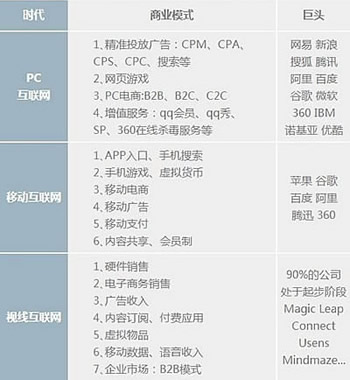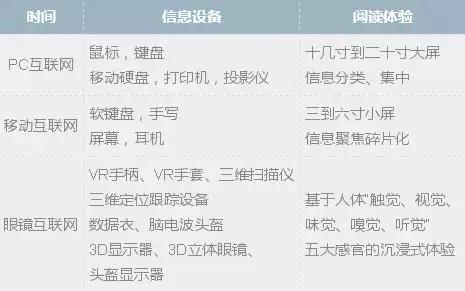 1. The first 10 years, the PC Internet era1) The core thinking of the PC Internet: traffic comes first!
1. The first 10 years, the PC Internet era1) The core thinking of the PC Internet: traffic comes first! Merchants based on traffic thinking are indisputable, seize the upstream of the industry chain and control pricing power:
◆ The upstream of the website is navigation. Go to the Internet cafe and open the browser is hao123
◆ The upstream search of navigation, formerly relying on Mongolia for homework, now relying on Baidu
◆ The upstream of search is the browser. Since 1998, IE has been under dictatorship for 10 years, and its share in 2002 was as high as 96%.
◆ The upstream of the browser is the input method, users can not anti-virus, but it is impossible not to type. The installed capacity is 100%.
◆ The upstream of the input method is anti-virus software. How many software giants were killed by 360 in the past?
◆ The upstream of antivirus software is the operating system. Based on the almost only Windows platform in the world, the Internet was an emerging industry at the time. In the early stage of rapid development, many projects tasted the sweetness of traffic dividends and even became the first camp. Traffic is king, as long as there is traffic, you don't need to be melancholy to make money.
2) In the PC Internet era, giants live in harmonyChip manufacturers Intel and IBM, HP, Lenovo and other PC manufacturers are responsible for the hardware system, Microsoft is responsible for the OS, the operator provides the network, and Google Internet companies such as Tencent and Tencent are responsible for the provision of related Internet applications. Everyone fulfilled their responsibilities and made their fortunes, and got along quite harmoniously.
2. The second 10 years, the era of mobile Internet User thinking in the era of mobile Internet?
◆ Fragmentation: The user consumption scene has undergone tremendous changes. The place where we contact it is becoming more and more unstable, and the time is shorter and shorter, which intensifies the three fragmentation trends of users: fragmentation of shopping locations, shopping Fragmentation of time, fragmentation of shopping needs.
◆ Decentralization: The differentiation of information is no longer directly delivered to the audience through mainstream media. With the rise of social networks and media, each user is the center of information for splitting and spreading; flat, de-intermediate new The channel form allows users to be satisfied based on "distribution on demand".
◆ Scenario-oriented: The user’s first contact point is no longer through the PC, using the mouse and keyboard to enter the network to complete the consumption, plus the ubiquitous QR code of the merchant, the image search and voice input of the e-commerce, and it is more convenient Connect with consumers through "specific life scenarios".
Three, the third 10 years, look at the Internet era? The more successful the PC era, the heavier the burden, the more we have to give up.
In the first 10 years of the Internet, the fruits of traffic were harvested, but they couldn’t be satisfied until the next 10 years. Some Internet cannons have disappeared in 1960, and the chances of latecomers to take advantage of this kind of bonus are very slim. Especially in the investment field, the story of being a traffic circle user first and then thinking about the profit model can no longer impress investors.
In the mobile Internet era, giants race their races and invest in addiction to Internet entrepreneurship. The most feared sentence is: What should you do if BAT copies you?
The most thoughtful thing is: When will BAT be killed?
Some media have said that "After the mobile Internet era, only BAT and the rich are left."
What does it mean--BAT has become the largest investment institution outside of VC, and there have been four mergers and acquisitions; companies with self-hematopoietic capabilities and ideal cash flow will have the last laugh.
1) Is VR the next tuyere or the next pit hole? Data prediction can more clearly represent the industry’s attitude towards VR. According to the latest report from Goldman Sachs, VR and AR will become the next-generation computing platform after computers and smartphones, and the existing electronics market will be reshaped. In addition, Goldman Sachs also predicts the next ten years, by 2025, the annual sales of VR and AR software and hardware will reach 80 billion US dollars. It also said that if technology solves the battery and mobile problems, VR annual revenue can even reach 182 billion US dollars.
2) VR scene experience thinking and applicationVR scene design has begun to take shape in games, film and television, performing arts, live broadcast, social networking, education, tourism, trading, The nine major training sections can also be simply divided into three content sections: entertainment, life services, and business services.
The combination of virtual reality and entertainment will bring people a better experience and create more happiness. Virtual reality is integrated into the business process of traditional industries to realize the upgrade of management process experience, and to a certain extent realize lean production.
In the penetration of medical, education, industry and other fields, VR technology has also been placed in high hopes, which enhances the experience of knowledge resource application, and the learning method is simpler and more convenient. Simulated surgery and virtual reality teaching allow students to see In "Qinyuanchun. Snow", by touching the Great Wall, I can understand why "It is not a good man to reach the Great Wall".

 簡體中文
簡體中文

 簡體中文
簡體中文
 "The next 10 years will be the golden age of the Internet of sight", "Any technological innovation requires a 10-year maturity period" to extend the creation and completion.
"The next 10 years will be the golden age of the Internet of sight", "Any technological innovation requires a 10-year maturity period" to extend the creation and completion. 
 1. The first 10 years, the PC Internet era
1. The first 10 years, the PC Internet era In each era of the Internet, the forms and methods of information input and output are different, and the form of products is based on the changes of the scene to promote the different evolution of technology, and finally a new business model is born.
In each era of the Internet, the forms and methods of information input and output are different, and the form of products is based on the changes of the scene to promote the different evolution of technology, and finally a new business model is born.